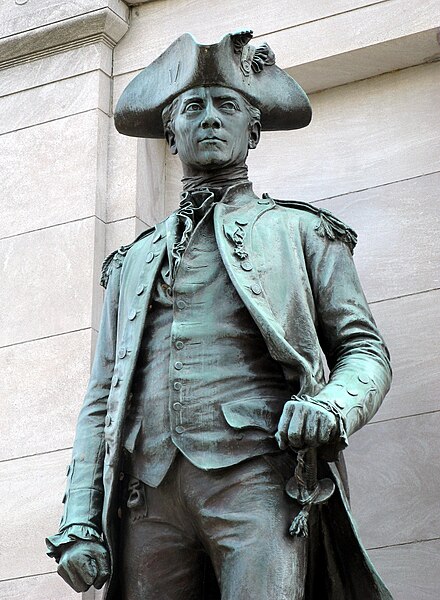John Paul Jones was a famous naval officer who commanded the fledgling Continental Navy during the American Revolution and is regarded as the Father of the United States Navy. Jones is an interesting man and ballsy as all hell. During the war, he lead raids not only against English shipping, but two raids of British Isles themselves - first at
Whitehaven, where he planned to burn all the ships in the harbor and anything else he could, followed by a raid against an Earl's estate on St. Mary's Isle, where he planned to kidnap and hold the Earl for ransom! Like I said, this guy was ballsy. He also participated in an attempted invasion of England by a combined Spanish and French force in 1779 and with several French ships under his nominal command, attempted to create a diversion to lure the Royal Navy's Channel Fleet away. The invasion failed, but in the subsequent battle between his ship, the
Bon Homme Richard and the HMS
Serapis, the legend of his famously proclaiming "I have not yet begun to fight!" was created. There is some doubt as to his saying that, but he did say "I may sink, but I'll be damned if I strike" in response to the captain of the
Serapis asking for his surrender.
Did I mention that at the time, Jone's ship was sinking? And just to top it off, he won that battle and took the
Serapis as his own. After the war, he decided to stay in Europe, first living in Paris, then moving to Russia and taking a job in their navy. He eventually left after political backstabbing a smear campaign directed against him by jealous Russian officers and returned to Paris, where he died on July 18, 1792. He was buried at St. Louis Cemetary, which belonged to the Royal Family of France. Unfortunately, the French Revolution hit not long after, the Revolutionary government that took over sold the land and I guess in the chaos, the everybody forgot "oh hey, there are bodies buried here, somebody might want to note that."




